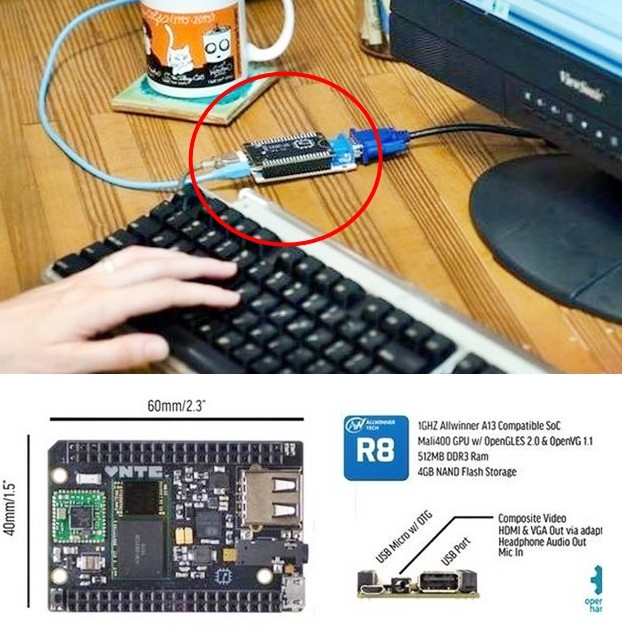A US$9 computer that fits in the palm of your hand and does anything an ordinary computer can do promises to end the reign of atrociously overpriced computers such as those from Apple sold with obscene profit margins.
The $9 computer is named CHIP. It was developed by a startup named Next Thing Co. based in West Oakland, California that aims to put this incredibly cheap and hackable computer into the hands of as many people as possible, as soon as possible.
CHIP hit Kickstarter on May 7 and quickly exceeded its target funding goal of $50,000. As of May 10, Next Thing raised over $407,000 from over 8,000 people, said Ars Technica.
CHIP is a tiny, palm-sized circuit board "built for work, play, and everything in between," said Next Thing. The company describes CHIP as a remarkably powerful invention that targets everyone including "students, teachers, grandparents, children, artists, makers, hackers and inventors."
Despite its miniscule size, CHIP is incredibly powerful. It's powered by a 1 GHz Allwinner A13 processor with 512MB of RAM. The hardware gives it enough performance to run its own tailored open-source distribution of a full Debian-based Linux operating system. Graphics come from a Mali400 GPU that's often used in Android phones.
The 4 GB of storage contains a familiar graphical interface out of the box. Among the popular apps preinstalled are VLC Media Player, the Chromium web browser and LibreOffice.
Coding tools are also included, which one also finds in the Raspberry Pi that inspired CHIP.
CHIP can work with any type of monitor. Peripherals can be connected with USB or Bluetooth 4.0 and the board has WiFi 802.11b/g/n built-in. This removes the need for multiple USB ports and allows the board to be made smaller since peripherals can be attached wirelessly.
The only ports on the board are a micro USB for power and charging. It also has a full-sized USB port and a composite video out so it can work with older televisions.
The micro USB also supports USB OTG. There's also a battery connector for a 3.7V LiPo or NiCd battery to let you take CHIP anywhere. An integrated circuit lets you charge the battery directly with the micro USB port.
CHIP measures 60 mm x 40 mm. It has 8 digital GPIO pin outputs to connect CHIP to hardware, including touchscreens and LCD panels.
The $9 price will get you the core CHIP board. At $19, you can add a VGA adapter. For $24, you get an HDMI adapter.
Dave Rauchwerk of Next Thing said the development team didn't want to compromise anything, but realized the computer that powers it is really expensive.
"So we went to China and had conversations and knew how much it needed to cost. We ended up with a $9 computer. $9 isn't the magic number, but $99 is the magic number for selling products", he said.
Rauchwerk noted that one of the first sub-$99 products is a "hacker Game Boy," otherwise called the "Pocket CHIP". This device comes with a $49 handheld touchscreen, a case, five-hour battery pack, and a stripped down QWERTY keyboard containing CHIP. It's basically a fully-functional Linux computer.
It also includes a battery and the ability to "use a pencil as a kickstand".
Rauchwerk said the $9 price was made possible by ordering tens of thousands of processors from Allwinner Technology, a China-based fabless semiconductor company that designs mixed-signal systems on a chip, reducing the cost dramatically.



























